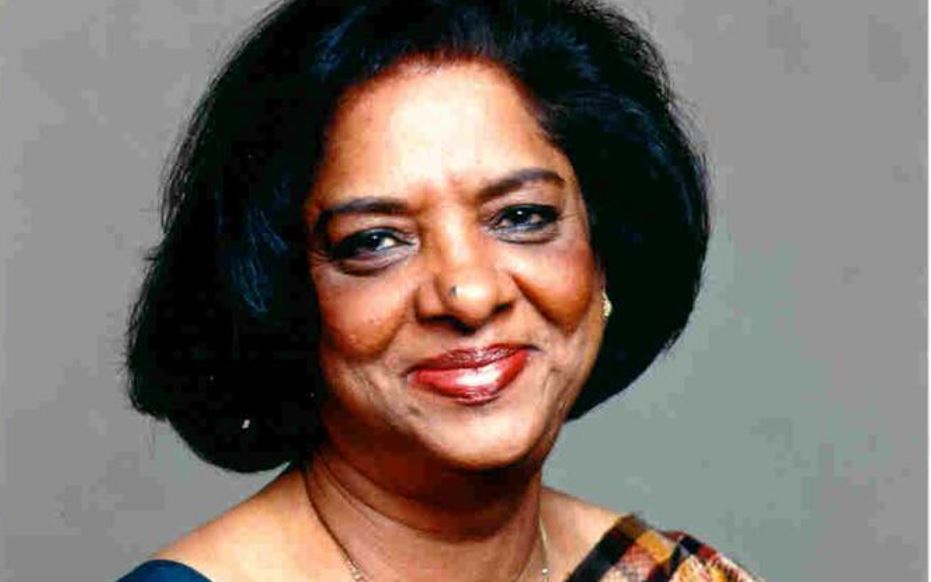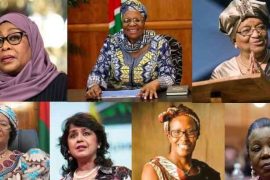Obstetrician-gynecologist Nafis Sadik, who was widely recognized as one of the world’s most successful advocates for women’s reproductive rights, passed away at 92. Sadik was the first woman to lead the UN Population Fund when she was appointed to the position in 1987.
Sadik, whose maternal grandmother passed away while giving birth, started working as a medical corps officer in the Pakistani military and with the nation’s family-planning initiative. Her years of seeing mothers giving birth to as many as 15 children while frequently risking their own lives appalled her. She assisted underprivileged women worldwide in accessing contraceptive and healthcare education materials when she joined the UN Population Fund in 1971.
She spent decades arguing with government officials on the significance of improving women’s status more broadly by granting them access to education, employment, and more rights.
In 1987, Sadik as the Population Fund’s executive director by UN Secretary-General Javier Pérez de Cuéllar. For the following 13 years, she oversaw the agency, which had 800 employees and a $300 million (£255 million) budget at a time of rapid population increase. Three more life would be added to the globe every second, according to the agency’s 1990 prediction.
Her leadership of the 1994 UN-sponsored International Conference on Population and Development in Cairo, which brought together 20,000 world leaders and others to examine the problem of overpopulation, was a turning point in her career.
She stressed the urgent need to empower women, a radical change from prior population-control initiatives in which countries imposed birthrate limits and, in some instances, like China, harsh penalties for those who refused. According to Sadik, their activities violated the rights of women.
She believed that decades of study had demonstrated that women would naturally lower the birthrate if given the means to control pregnancy.
This conference is about choices and responsibilities – for the person, the community, the nation, and the planet, she explained at the time to The Washington Post. Its goal is to increase our freedom of choice, including our ability to choose our family size, population policies, and development practices.
In the expectation that he might lift the Holy See’s ban on contraception, she said she saw Pope John Paul II in a secret audience at the Vatican months before the Cairo summit. However, she claimed she made little headway and was effectively pushed out immediately. In their 1996 biography of the pope, His Holiness, writers Carl Bernstein and Marco Politi quoted her as saying, “He was upset with the method we were pursuing.” “Why had we adopted this new strategy for defending individual rights? I then questioned, “Are there any other sorts of rights?” The pope denounced the summit as “a United Nations effort to destroy the family” in public.
Sadik and Vatican representatives frequently argued throughout the meeting about what they perceived as inconspicuous allusions to abortion availability and support. By claiming that the conference did not establish a basic right to abortion but rather a wish to protect women from unlawful and dangerous treatments, she attempted to diffuse the tension.
Sadik, a devoted Muslim, received death threats from Muslims who believed she was enforcing Western values in their beds on US orders. According to colleague Richard Snyder, her reaction was: “If they murder me, then I’ll be a martyr for the cause, and it would erase all that they want.” UN security specialists had informed her that they feared for her life in Cairo. I don’t believe I can lose this one, anyway! Sadik pushed on, bringing up more subjects for discussion that were seldom covered at a diplomatic gathering of nations: rape, incest, and female genital mutilation.
Stirling Scruggs, a UN employee, remembers the response, saying that Nafis “took [FGM] to the forefront, and she pushed it strongly.” Many individuals said, “That’s cultural. It’s none of your concern.” And she added, “Women getting hurt is our concern.
By the end of the week-long conference, 179 countries had agreed to a plan of action to deal with population and development over the following 20 years, which included making family planning services widely accessible, reducing disease and poverty, expanding educational opportunities, and beginning to think about environmentally sustainable economic development.
During her time in office, Sadik noted a rise in the number of developing nations with family planning programs supported by the UN. Still, she expressed disappointment that more countries had not upheld their commitments from the Cairo conference.
The Times listed Sadik as one of the world’s top 100 most powerful women in 1996. Sadik had attended the World Conference on Women in Beijing the previous year with first lady Hillary Clinton. Her “forward-thinking” leadership on “strategy on strengthening the status of women in emerging nations while working to curb the population expansion” was praised by the newspaper.
Iffat Nafis Shoaib, who would later become Pakistan’s finance minister and a vice president of the World Bank in Washington, was born Iffat Nafis Shoaib on August 18, 1929, in Jaunpur, British-ruled India. Sadik later spent her childhood in Karachi and Calcutta, where her father worked as a government finance officer following the partition of the country in 1947.
Sadik was a gifted young woman who also played badminton and performed Indian classical music. She participated in a bridge competition.
In 1954, she wed Azhar Sadik, a Pakistani army officer, in a ceremony performed in Washington. She then finished her obstetrics residency at City Hospital in Baltimore. She soon went back to Pakistan, going to Abbottabad with her husband and setting up a post for herself to care for the spouses of troops. Then, although sometimes travelling alone in an army Jeep through arduous mountain routes, she expanded her services to include women in rural towns.
According to her, the biggest issue was women having many pregnancies until they gave birth to a boy to appease their spouses and in-laws. She told the AP, “It started to dawn on me that these poor ladies truly had no control over their life,” She went out and purchased condoms to give to women. She also talked to the village men about family planning with what she called stunning candor for a woman at the time. Sadik claimed that she had once become so enraged that she demanded the men in one group sign agreements promising to give their women a respite from continuous pregnancies.
She was chosen to supervise Pakistan’s five-year family planning program after completing her public health degree at Johns Hopkins University in the mid-1960s. In 1971, she joined the UN Population Fund as an adviser. The following year, she told The New York Times, “I declare with certainty that regardless of nation or culture, no woman in the world wants a kid every year,” solidifying her image as a prominent voice on population control.
Her daughter Mehreen Sadik passed away in 2015, and her husband passed away in 2011. The survivors are four children, a sister, ten grandchildren, and four great-grandchildren.
Sadik spent a number of years as the UN secretary general’s special envoy for HIV/Aids in Asia and the Pacific after resigning as the head of the Population Fund. Former World Health Organization director general and former Norwegian prime minister Gro Harlem Brundtland said about Nafis Sadik: “Nafis Sadik was an amazing agent of change. She possessed the drive, perseverance, and guts to improve mankind truly.





Comments are closed.